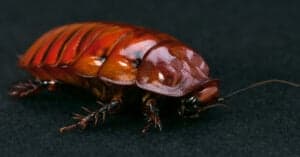Louisiana is a visually gorgeous state, but it’s also full of nasty insects looking to bite, sting, and burn its human residents. Many of these insects fly, which means you’ll find yourself dodging aerial assaults as well as attacks from the ground. Read on for a list of 9 annoying insects in Louisiana!
1. Mosquito

At least 68 species of mosquitoes call Louisiana home.
©Vinicius R. Souza/Shutterstock.com
Also known as Louisiana’s state bird, this insectile nuisance is a worldwide menace, killing more humans than any other animal on Earth. The ones in Louisiana aren’t likely to kill you, but they’ll leave behind an itchy bump and possibly a disease or two. At least 68 species of mosquitoes reside in the state including the southern house mosquito, floodwater mosquito, woodland mosquito, and malaria mosquito. This last one is capable of spreading malaria, West Nile, and dog heartworm.
Interestingly, only female mosquitoes bite. They do this to acquire protein from blood to aid in egg development. The reason their bites itch is that they inject saliva after feeding, which triggers the release of histamines in the human body to repair the damage.
2. Red Imported Fire Ant

The red imported fire ant is an aggressive insect delivering an incredibly painful sting.
©AOKSANG STUDIO/Shutterstock.com
If a fire ant bites you, you’ll know it. The red imported fire ant is an insect in Louisiana native to South America, likely gaining access to the United States through Alabama in the 1930s. It is currently widespread in all habitats throughout the state of Louisiana. This insect has a dark red head and thorax with a shiny, reddish-black abdomen. Its nest looks like a mound of crumbled soil. Because its colonies often consist of multiple queens, pest control is largely ineffective for this species.
The sting of the red imported fire ant is extremely painful. It causes intense itching and skin irritation as well as occasional pustules. Some people experience anaphylaxis in response to its sting. If possible, avoid stepping or standing on a fire ant nest. These aggressive insects are known to swarm and attack in large groups, stinging repeatedly.
3. Honeybee

When honeybees sting, they lose their stingers, which kills them.
©iStock.com/manfredxy
Since 1977, the honeybee has worn the title of Louisiana’s official state insect. These bees are critical pollinators with fascinating habits, but they also deliver a sharp sting. Though they aren’t aggressive by nature, worker honey bees will sting if you are too near the nest or otherwise pose a threat. As with mosquitoes, only the females sting. Once a honeybee inserts its stinger, it can’t pull it out again due to the harpoon-like barbs. As soon as it tries, it yanks it out of its own abdomen, leaving a deadly hole in its body.
Honeybee stings hurt so badly because they release a venom called melittin into the wound. This triggers pain receptors in the skin. Itchiness and swelling usually accompany a bee sting and can last for several hours or days. Unfortunately, some people suffer severe anaphylactic reactions that can lead to death. In any case, it’s important to remove the stinger from the wound.
4. Cow Killer Wasp
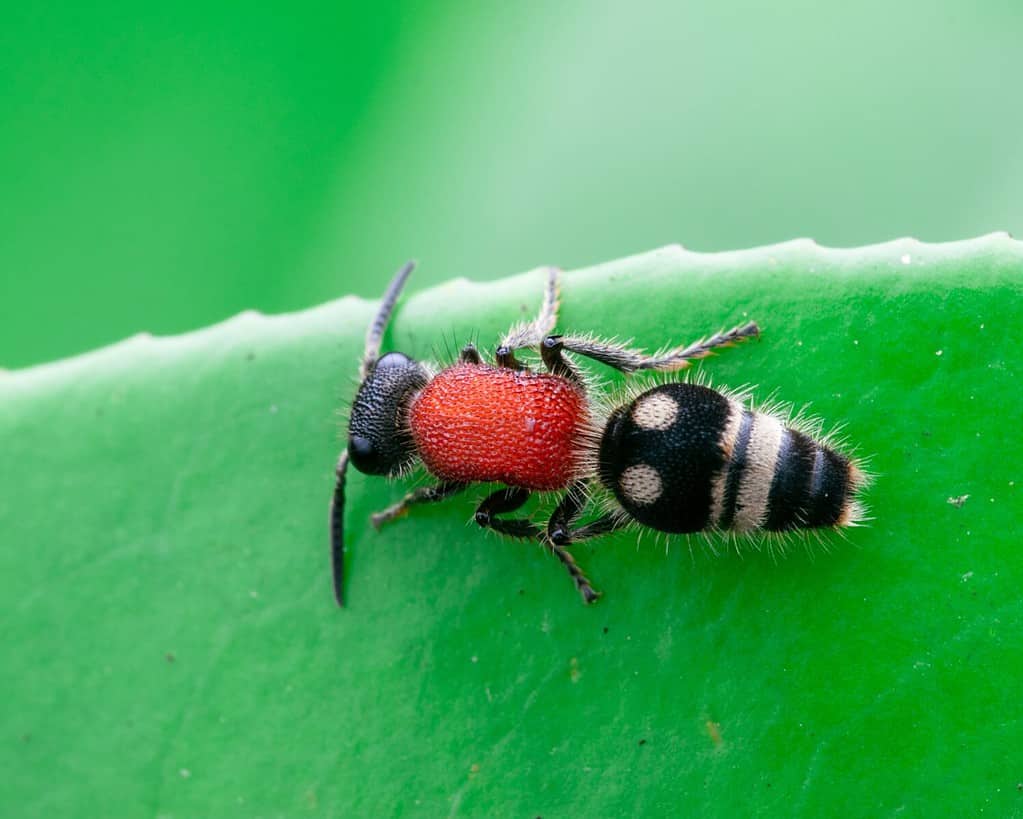
Cow killer wasps are also called cow killer ants or velvet ants because the females lack wings.
©RyanPictures/Shutterstock.com
The fourth annoying insect in Louisiana on our list, the cow killer wasp, is so named because of the female’s reputation for delivering a sting strong enough to kill a cow. People often mistake these parasitoid wasps for ants because the female is wingless. The striking red and black coloration makes them easy to identify and, hopefully, avoid. They tend to live a solitary life, mostly coming out alone after dusk.
The sting of this insect is excruciatingly painful. However, the reports of its deadly nature appear to be greatly exaggerated. So far, there is no conclusive evidence that one of these wasps has ever killed a cow. Its venom is mild, causing pain and irritation but rarely anything more severe in humans.
5. Chigger

Chiggers are tiny mites that inflict itchy, painful bites.
©Matauw/Shutterstock.com
Classified as arachnids rather than true insects, chiggers are also known as berry bugs or bush-mites. These microscopic mites are not dangerous, but they do inflict painful bites that cause irritation and swelling. They typically attach themselves to the clothing of people passing by and then move onto their skin, where they feed on tissue. The most common sites for chigger bites are the ankles, lower legs, backs of knees, groin, waist, elbows, and the crooks of arms. Bites tend to occur wherever clothing is tight on the body.
Chigger bites look like lines of red speckles or pimples on the skin. The bites itch due to a liquid chemical that kills skin cells and enables the chiggers to drink skin tissue. Itching is most intense for the first 24-48 hours, typically fading away over the next week or so. These mites are common in wooded areas, gardens, overgrown grass, moist soil, and areas of high humidity.
6. Tick
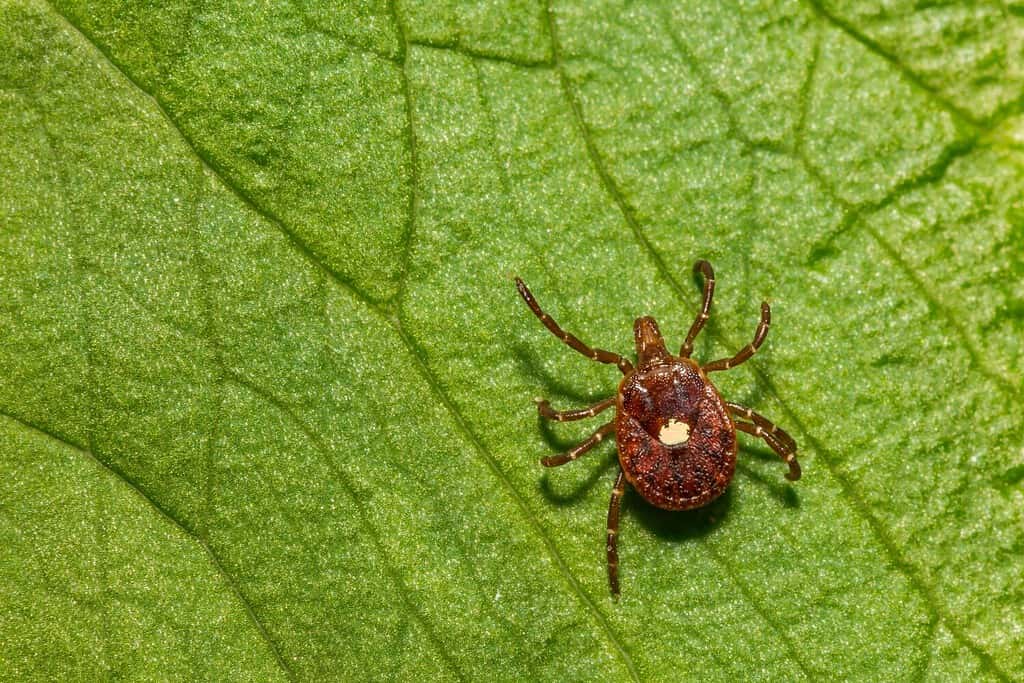
Ticks can transmit diseases like Lyme disease or Rocky Mountain spotted fever.
©Jay Ondreicka/Shutterstock.com
Another biting arachnid on our list is the tick. Little causes a more visceral reaction in a human being than the sight of a tick feeding. There are at least nine types in Louisiana including the woodchuck tick, American dog tick, deer tick, and brown dog tick. Most ticks are black or brown in color. Although their bites are usually painless, ticks can transmit diseases like Lyme disease, Rocky Mountain spotted fever, and tularemia. They are also difficult to remove as they embed their mouthparts in their host’s skin while imbibing the blood meal.
The good news is, after a tick is full, it will drop off on its own, usually after three to five days. However, you won’t want to wait that long as the risk of disease transmission increases the longer the tick is attached. According to the Centers for Disease Control and Prevention (CDC), one of the best ways to remove a tick is to use fine-tipped tweezers to pull it gently and steadily upward until its mouthparts detach from the skin.
7. Blister Beetle
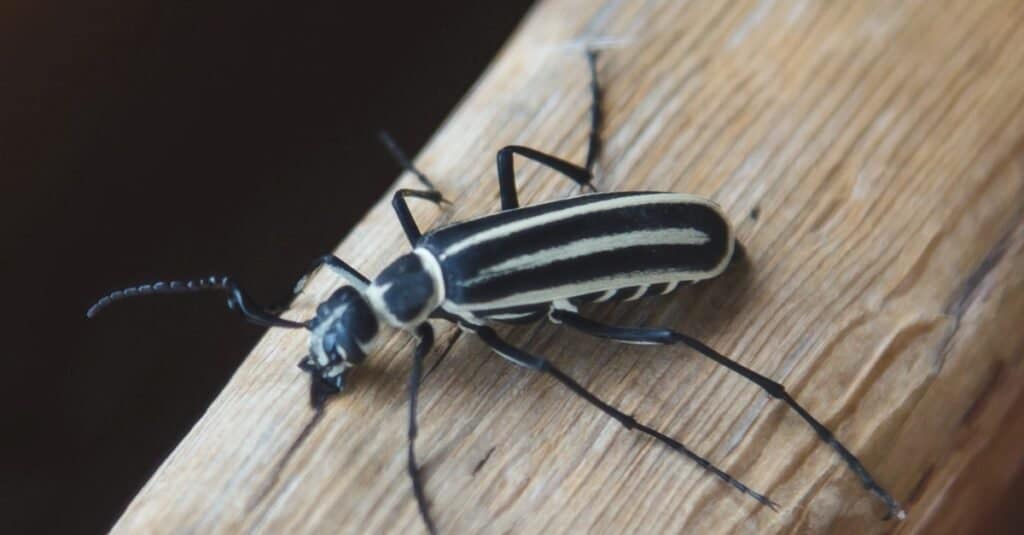
Blister beetles secrete a toxin called cantharidin, which causes burns and blisters.
©iStock.com/PhotoSparks
Despite its inclusion on this list, the blister beetle doesn’t bite or sting. Rather, it burns. This elongated beetle secretes a caustic toxin known as cantharidin, which causes painful burning and blistering. This insect is also potentially fatal to horses when ingested, which typically happens while the horse is eating alfalfa hay. Blister beetles can be either dull or brightly colored depending on the species and region.
If you notice a blister beetle on your body, gently blow it off. Then wash the area with soap and water. If necessary, apply a topical cream to soothe the symptoms. The burning should go away on its own without leaving a scar.
8. Buck Moth Caterpillar
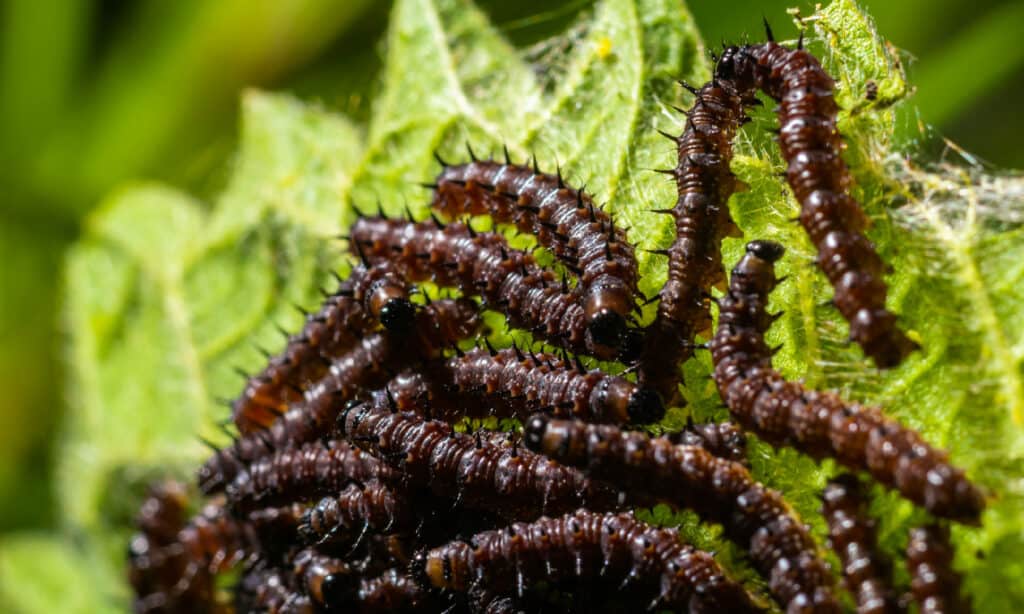
The buck moth caterpillar is covered with venomous spines.
©iStock.com/Oleg Marchak
The buck moth caterpillar is one of the most annoying insects in Louisiana. A fan of the Louisiana oak tree, they lay their eggs in a circle among the smaller stems. They fall from the trees to pupate in the soil below, which means they often land on people passing below. These dark caterpillars carry stinging spines attached to venom glands. The spines deliver extremely painful stings that result in itchiness, redness, and swelling.
Medical professionals advise removing any embedded stingers as soon as possible. This may help alleviate the symptoms. Any that remain will likely come out on their own with time. Always seek medical care in the event of infection or a severe allergic reaction.
9. Spiders
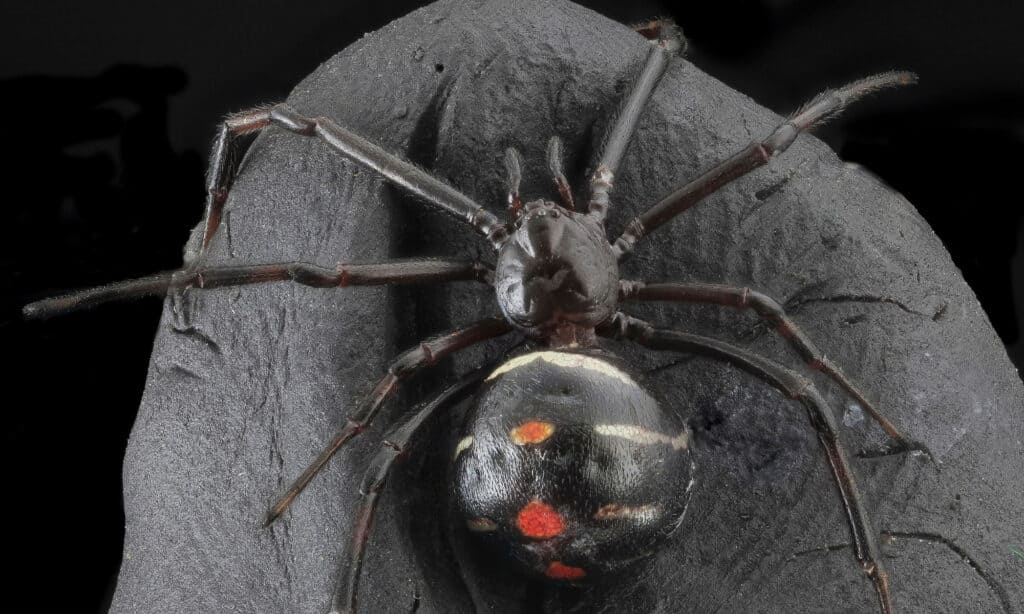
Black widows are among the venomous spider species in Louisiana.
©Porco_Rosso/Shutterstock.com
No list of creepy crawlies would be complete without a mention of spiders. Belonging to the arachnid class, spiders look intimidating but usually don’t have mouthparts large enough to pierce human skin. This means that most venomous spiders have no way to inject that venom into humans, rendering them effectually harmless. However, there are a few species in Louisiana that are dangerous to humans. These include the brown recluse, black widow, and hobo spiders. All of these species inflict painful, venomous bites that require medical attention.
Potential symptoms of a venomous spider bite include pain, irritation, itchiness, swelling, redness, and rash. The venom of brown recluse and black widow spiders causes open sores while the hobo spider’s venom causes slow-healing wounds. If you’re concerned about a spider bite, always seek medical attention.
Conclusion
If you plan to be in Louisiana over the summer months, be sure to bring a good bug spray. This should help repel stinging or biting insects. Also, be prepared to treat symptoms like pain, itchiness, swelling, and anaphylaxis. Above all, remain aware of your surroundings. Most insects in Louisiana don’t bite or sting unless they feel threatened.
The photo featured at the top of this post is © vblinov/Shutterstock.com
Thank you for reading! Have some feedback for us? Contact the AZ Animals editorial team.





